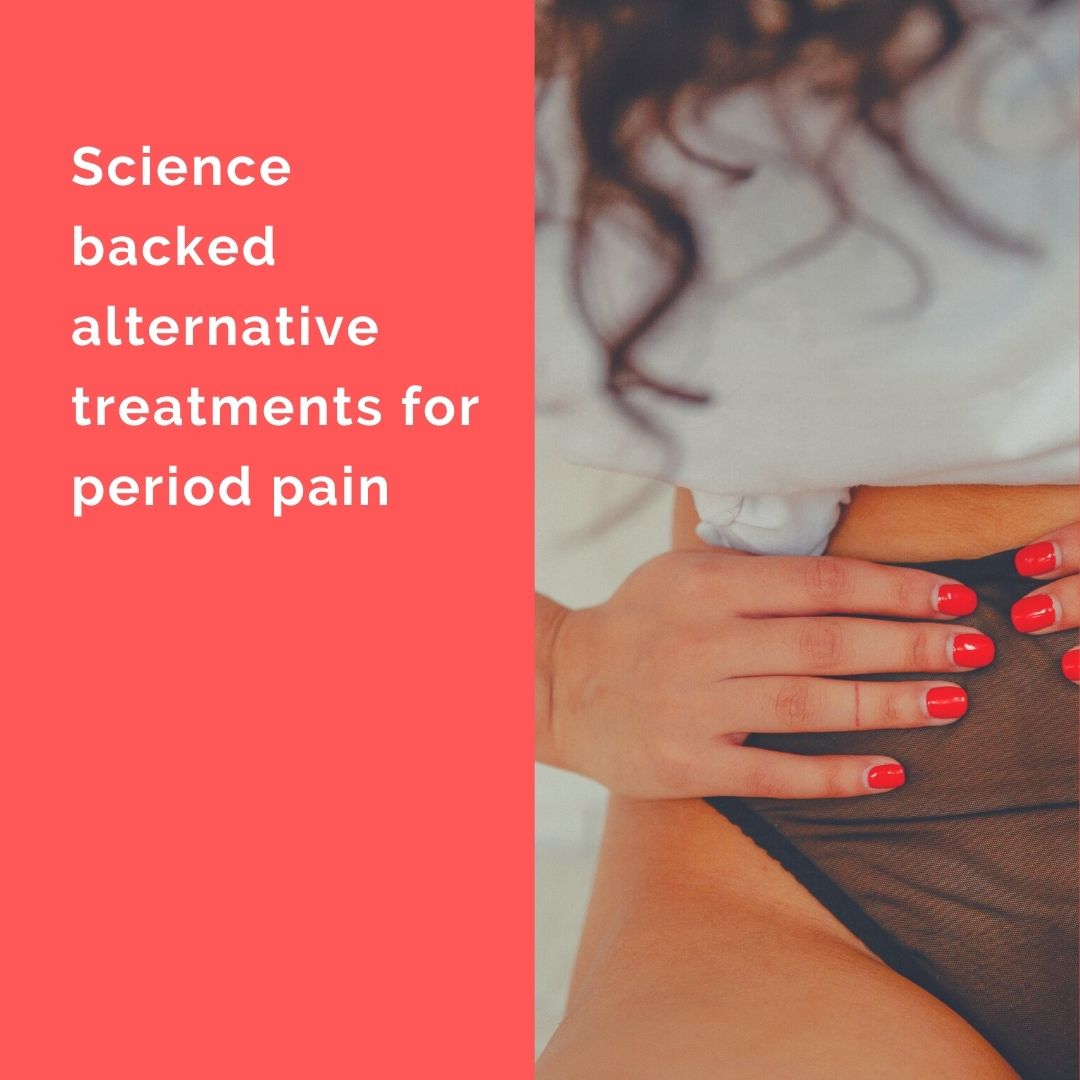
Period Pain Relief – Scientifically backed ways to tackle cramps without taking medication
Menstrual (period) cramps are throbbing, aching cramps you get in your lower belly just before and during your period. They’re some of the most common, annoying parts of your period. They can strike right before or during that time of the month. Pelvic pain may also cause anxiety and depression, which can amplify the severity of pain.
Your doctor may call your cramps dysmenorrhea, this is the medical term used to describe painful periods.
- Period pain from your first period or shortly after, and without a known cause, is known as primary dysmenorrhoea.
- Period pain caused by certain reproductive disorders, such as adenomyosis, endometriosis or fibroids, is known as secondary dysmenorrhoea.

Symptoms of dysmenorrhoea can include:
- pain low in the abdomen that can spread to the lower back and legs
- pain that is gripping or experienced as a constant ache, or a combination of both.
Typically:
- the pain starts when the period starts, or earlier
- the first 24 hours may be the most painful
Despite its negative effects and the availability of treatment at minimal cost, few patients with primary dysmenorrhea visit medical clinics, and members of this population are frequently undertreated.
With all this in mind, we have carefully researched are some treatments that are safe alternatives to over the counter painkillers and anti-inflammatories which have been demonstrated to be effective through several scientific studies.
Make good use of heat therapy
This study , summarising the results of 1052 studies found that
“Our systematic review showed the clear benefit of heat therapy for menstrual pain in women with primary dysmenorrhea... heat therapy was associated with a decrease in menstrual pain in women with primary dysmenorrhea. These results are consistent with the recommendation of local heat as a complementary treatment for dysmenorrhea”

Here is a second study which found heat very effective and explains the mechanism behind the pain relief:
“For women with dysmenorrhea, the application of local heat can reduce muscle tension and relax abdominal muscles to reduce pain caused by muscle spasms. Heat can also increase pelvic blood circulation to eliminate local blood and body fluid retention and diminish congestion and swelling, thereby enabling a reduction in pain caused by nerve compression”
This study found application of heat to be more effective than taking oral ibuprofen: “Continuous low-level topical heat therapy was as effective as ibuprofen for the treatment of dysmenorrhea.”
Try some ginger
This review of several studies into Ginger’s potential use for managing period pain found that it can be comparable to taking another over the counter anti inflammatory (such as Ibuprofen)
“One systematic review suggests that, as pain treatment, ginger has a superior safety profile to NSAIDs, indicated by fewer gastrointestinal side effects... Given the safety profile and preliminary evidence of efficacy, ginger may be appropriate for women with dysmenorrhea who cannot or prefer not to use conventional medications..”
Ginger also gets bonus points for helping with stomach issues and nausea, both problems that often come alongside period pain/ PMT.

If you are considering supplementing ginger to help wit period pain and wondering how much to take, this study found significant improvement with a dose of 1500mg (3*500g taken 3 times daily). If you prefer to take food as medicine, that works out at about 1 teaspoon of powdered ginger a day, which could certainly go into a lovely soothing curry, tea, or stir-fry!
Foods for period pain
This study found that:
- Participants who ate more than 2 pieces of fruit a day were less likely to suffer period pain
- Those who ate pulses more than once a week enjoyed lower period pain levels
- Daily olive oil consumption was correlated to lighter periods. Cured meat was correlated with higher bleeding.
- Consider cutting back on meat, period pain has been shown in several studies to be less severe in people with vegetarian diets
Do a little Exercise
Women who exercise regularly often have less menstrual pain. To help prevent cramps, make exercise a part of your weekly routine.

A review of studies on dysmenorrhea and exercise identified seven trials on the subject (three observational studies and four randomized controlled trials). Of the four randomized, controlled trials (two compared different types of exercise and two compared exercise to no exercise), all found a significant reduction in dysmenorrhea among exercisers.
Massage your lower back and abdomen.

This study found that during twice weekly massage “after the first treatment month, the pain score decreased significantly ... The percentage of women requiring pain medication and reporting systemic symptoms decreased over time”
It seems that more work is needed, but it is a lovely, harmless and relaxing thing to do be it in the form of self -massage, help from a partner, or visiting a trained massage therapist or physio.
We hope you find these helpful, do comment if you have had success with any of the above methods, and remember, serious, ongoing period pain may not be normal and is worth speaking to your doctor about if you think it is not normal.

